|
I was recently part of a conversation on Facebook that left me pondering the dissemination of information and how we choose what information we keep, what information we question, and what information we dismiss. The discussion surrounded, not surprisingly, around horse shoeing and, more specifically, fitting a shoe to a horse with under run heels. There was a picture of a horse that was shod pretty appropriately for the conformation and people, mostly farriers, were discussing how it was set up. A trainer joined the conversation and mentioned that she thought that the shoe was too small and needed to be fit so that the heels of the shoe were under the bulbs of the heels so it would support the “tendons and ligaments” of the leg. At first glance, and without any real critical thought put into it, the statement made sense. I’ve heard that before and previously in my career, I’ve probably even said that before. I’m sure that the trainer had heard someone else say that and, it made good sense to her so it became her opinion, too. Soon after her post, a well educated farrier that I have a good deal of respect for asked a few pointed questions that really brought the trainer’s comment back down to earth and centered the discussion around anatomy, biomechanics, and physics. “What would that do to the suspensory ligament?” “Exactly what tendons and ligaments are you supporting?” “What effect would that kind of leverage have on an already compromised heel?” BAM. Now we were back to discussing this specific situation in an analytical manner using anatomy, science, and physics as our guide. The conversation continued and eventually strayed far off course, as they often do, and this trainer’s comment was left behind and mostly forgotten. But it stayed with me for quite a while. What she said did make sense. It wasn’t accurate, but it made sense. Without a base knowledge of the anatomy and biomechanics of the equine, it almost seemed like common sense.
It’s an amazing time to be alive if you are an intellectually curious person. We have knowledge at our fingertips that was once only available in University textbooks or hard-to-read research papers published in field specific journals. The downside to that is that the information highway is riddled with potholes full of opinions and erroneous statements of fact. The average internet researcher often lacks the analytical skill or the drive to properly pry opinion from fact. Therefore, we usually research until we find something that “makes sense to us”. We rely heavily on our common sense to decide what information to retain regardless of the fact that, what may seem like common sense to one can be seen as a ridiculous concept to another. There is no barometer for common sense. Everybody has it and everybody thinks theirs is the best. And we’re all guilty of this. At some point, you’ve accepted something as fact without fully researching it and worse, you’ve probably passed it on to someone else with such confidence behind your words that they too, believed it true. And so it spreads. I don’t believe that anyone really does this with any great or malignant intent and there are probably a myriad of reasons that we pass on information that we’re not so sure is correct. Maybe we’re filling a need to be right, a need to justify our place in the conversation, or a need to just constantly be the person that knows a little about everything. And it’s probably not a conscious decision that we make. The ego is a strong player in our world and the fact that it operates on the subconscious level make it very difficult to control at times. But regardless of the reason that we pass bad information on, we only have the information because, at some point, we’ve accepted it. And without any formal education on the topic, we usually accept it because it makes sense to us. I’m certain that this trainer had no evil agenda in making this comment and was only offering it in the best interest of the horse as that was what she believed to be true. But it wasn’t, and I only know that because of my understanding of equine anatomy and biomechanics. But, even to me, the way it was stated made sense. To a horse owner, who only wants the best for their animals, it would make sense. And maybe they would accept it as fact. And maybe they would pass it on to their friends. And we’re off…. It would be ridiculous to expect the average horse owner to acquire all of the knowledge that is required to keep a horse healthy, happy, and successful. So most surround themselves with experts in the different fields of equine management. A vet, a farrier, a trainer, a dentist, etc… all carrying the knowledge that they need to be successful in their individual field and all who join together to form a team that will hopefully lead to a successful horse and rider. The most successful teams find the members orbiting the horse in the way the planets orbit our sun. On individual paths, aware of but not interfering with the others. But when Saturn steps off course, the results can threaten the existence of the entire team. A questionable analogy at best, but this is what can happen when one team member steps out of their area of expertise to interfere with another. And it often happens with the best intentions and it often happens with erroneous information delivered in a passing comment, and it often happens without anyone realizing the true ramifications that it can have to the success of the equine athlete. At some point, this trainer heard someone say that the shoe needs to be set a certain way to support the tendons and ligaments, and it made sense. So she mentions this on an internet discussion board full of horse owners when one posts a picture of her recently shod horse. The owner, wanting the best for her horse begins to question the way her horse is shod, after all the comment came from an expert and it does make sense. If the farrier is lucky, the client will bring her concerns up at the next shoeing and the two will be able to discuss it at length. If the client is lucky, the farrier will be well versed in equine anatomy, biomechanics, and physics and will be able to explain why the horse is shod the way it is. If they’re both lucky, they will overcome the dissemination of bad information and move on. Unfortunately, another likely scenario is that the horse owner will not feel comfortable discussing their concerns and will slowly lose confidence in their farrier until they feel the need to remove them from their team. While this is a pretty specific example, in any situation, a single comment can very easily have widespread repercussions. If a single celebrity on a television talk show can bring into question the validity of decades of proof that immunizations save lives a trainer on the internet can certainly make a horse owner doubt their farrier. I often joke with my professional peers about how little we know about horseshoeing but there is a great deal of truth in the importance of knowing what you don’t know. I see it all of the time with new farriers. They are quick to jump into a conversation to regurgitate what they learned in school, or what they heard at a recent clinic, or what another experienced farrier told them last week but regurgitation is not understanding and, without understanding, they are only passing on what makes sense to them. It’s not until they reach a point of self awareness that allows them to truly know what they don’t know that they begin to really grow as farriers. It happens to all of us and it has happened to me throughout my career. I have always been at my best when I’m painfully aware of how little I know about this trade and how I will have to spend my entire life learning to only get a partial understanding of the horse and my part in its life and athletic success. But there is no shame in not knowing if you’re willing to learn, there is nothing wrong with not speaking up when a group of experts are discussing something. The trainer in that discussion missed an opportunity to learn as there were people with far greater knowledge than her discussing the topic. Her erroneous statement of fact could have been transformed into a question so that she would better understand in the future. She could have asked why? Or she could have remained silent and not spread information on that wasn’t accurate if only she realized what she didn’t know. We all miss an opportunity to learn when our egos tell us to show everyone what we know. And while I don’t foresee the potholes in the information highway being repaired anytime soon, we can all do our part to help each other avoid them. It’s important to let the experts be the experts. It’s important to know how much you don’t know. It’s important to say, “I don’t know” when you really don’t know, and it’s important to listen and learn if you don’t really have anything to say. But most of all, it’s important to question all of what you’ve just read because, really, it’s just my opinion and worth about as much as you paid for it.
6 Comments
There's not much you can tell a group of excited four and five year olds about horseshoeing. Especially when the large majority of that group has never seen a horse. I mean, they're even too young to ask the questions that we hear all of the time from summer camp riders at our training barns...."does it hurt" "have you ever been kicked" "have you ever been pooped on".... At least those I'm prepared to answer! But, no, the four and five year old crowd doesn't yet know to ask those questions so you just have to improvise. Heat some steel and show them how it turns red. Show them your tools, your truck, your textbooks, your hoof models.... That'll keep 'em busy for a minute or two. Fortunately, the rest of the time can be spent talking about why you have a microwave on your truck. Well, why do you have one in your house? Yeah, I like hot food, too.
But no matter the audience, I love to talk horseshoeing, So much so that those near to me (with the exception of my farrier father) have grown weary of my need to continually discuss all things farrier. Well, not so much the good client stories and gossip, but definitely the intricacies of why that plain stamped shoe that I just made is an embarrassment to my entire family or how I shod the sexiest foot of the week that day. But they humor me and act interested unlike the audience of four and five year olds. They're brutal. There's no feigning interest, you either have them or you don't. I don't know the true purpose of my setting up in a suburban parking lot to show a bunch of kids some tools and an anvil but I enjoyed the break in routine and they seemed to, as well. And, who knows, maybe one of them is the future Grant Moon or Craig Trnka and I can share some of the credit for lighting the fuse! |
Topical stories, rants and experiences from the world of horseshoeing. ArchivesCategories |

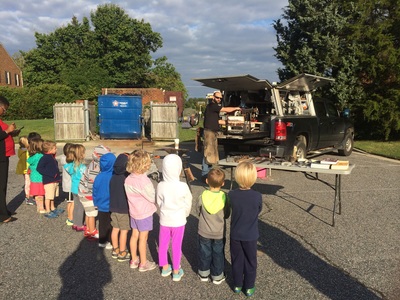
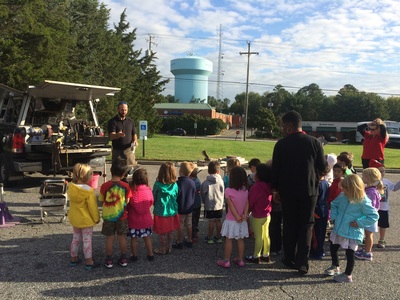
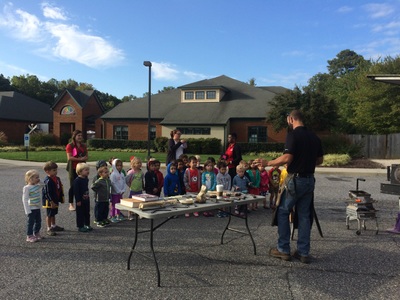
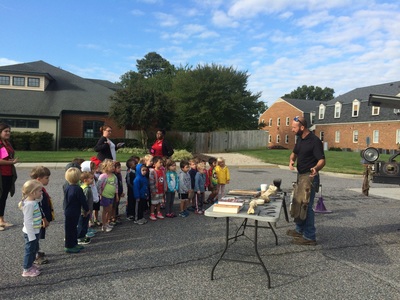
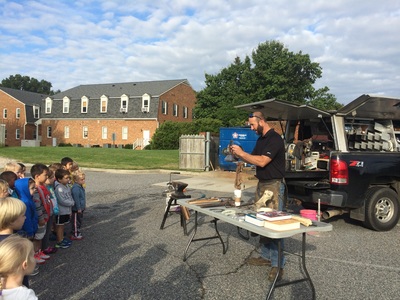
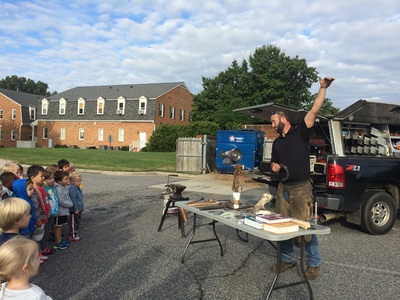
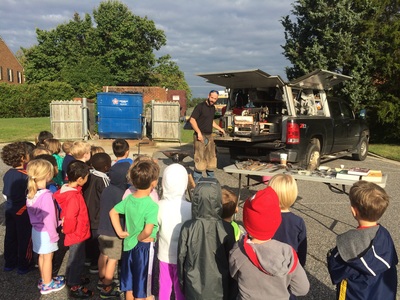
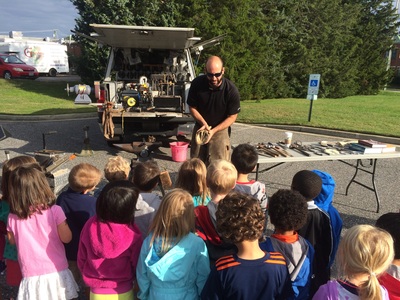
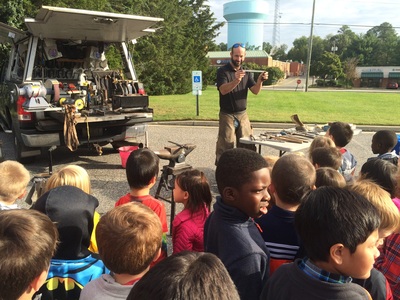
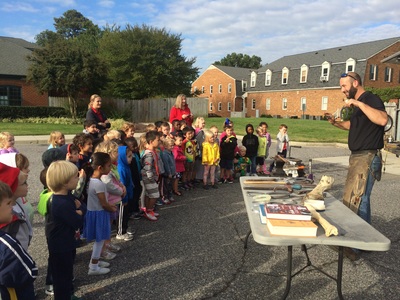
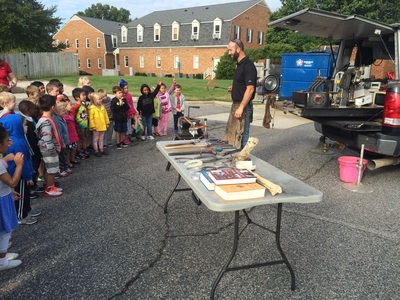
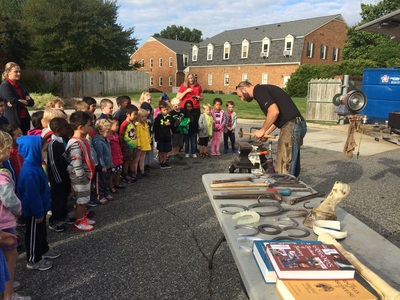
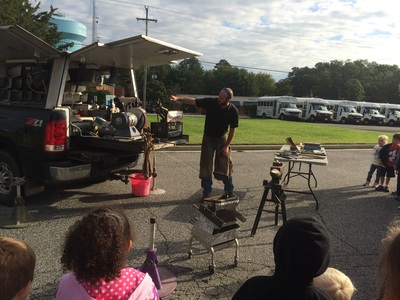
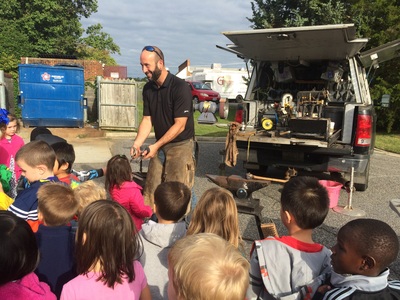
 RSS Feed
RSS Feed